On 15th August 2022 as India celebrated completion of 75 years of Independence, Sadhana Saptahik (Weekly Sadhana) entered the 75th year of existence. The special edition marking the milestone was thematically titled as "कालचे स्वातंत्र्य आमच्या दारात आलेच नाही… The Freedom You Got Yesterday Has Never Reached Our Doorstep." The special issue featured interviews with four prominent national figures—Kishorchandra Deo, Balkrishna Renke, Kancha Ilaiah Shepherd, and Noor Zaheer—who delve into how much beneficial national independence has truly been for the marginalized communities over the past 75 years.
The In-depth Interview of Balkrishna Sidram Renke, the former Chairperson of the National Commission for Denotified, Nomadic & Semi-Nomadic Tribes, gives insights into the plight of the communities, their fight for justice and the requirement of a wholesome plan for development. To mark the Independence Day and Weekly Sadhana's Anniversary this year, we urge you to revisit this interveiw in English.
Question - It has been half a century since you have been working in the movement. What could you say about this journey and its stages?
Answer - Since 1966, I had started visiting the nomadic tribes in and around Mumbai to understand the people, their settlements, their living conditions and their priority needs. Most of the nomadic tribes were seen living in slums. It took two years to identify and know the settlements of the tribes who do the business of scrap paper, scrap picking, repair umbrellas, beg for alms, fortune telling and such similar odd jobs. These were Nathpanthi, Dawari Gosavi, Mang, Garudi, Gandhari, Gondhali who work as Boharani buying old clothes, Parrot-owning Joshi, Gopal, Margamma, Masanjogi, Vaidu, Ramoshi, Wadar, Banjara, Ghisadi, Shikalgar, Kaikadi, Waghari etc. A fixed house, toilet, water supply, electricity were their priority needs. So we started forming self-help groups to take advantage of cooperative housing schemes. Initially, four or five self-help groups were formed and it went well. From the Ward, Office, Tehsil Office to the Ministry, cases of government housing organizations were presented by getting information about the schemes. We made demands to create housing organization for nomads on priority. We were obstinate. Through these efforts, the housing organisation 'Shri Nivara Sahakari Gihannirman Sanstha', 20 members of nomadic and denotified tribes got a building from the Housing Board at Sion-Chunabhatti on rent-purchase basis. I was the general secretary of this housing association. Seeing the experience of 20 people getting good, settled houses with less investment, the homeless nomadic people of Mumbai started queuing up to get advice and support. Activists who came to contact on their own were used to form organizations for wider issues.
The work of the organization began and by 1975 around 500 homeless nomads were able to get fixed houses through the efforts of the organization. Along with this housing work, we were able to create co-operative industrial societies of people working with waste paper and scrap business and give them government waste paper contracts. Along with this, by forming a co-operative society of tanners, they also got contracts worth lakhs of rupees from the Khadi Gramodyog Mandal. Cooperative credit banks of Nomadic Tribes, Sweepers, Meghwal Samaj, Leathermen etc. were started. All this structured and constructive work gave strength to organization building and its growth.
On April 4, 1973, we marched to the Legislative Assembly demanding representation of nomads in the government. Breaking the usual practice, Chief Minister Vasantraoji Naik personally came forward to receive the protest march. The result of this march was that in 1973 political activist Daulatrao Bhosale was appointed as their first representative on the nomads in the Legislative Council. This is the first example of representation for nomads not only in Maharashtra but also in India. After this the organization grew, broke up, many new organizations were formed; but one thing is true that the activists of the disturbed and ignorant nomadic tribes realized the importance of coming together and were motivated to form different organizations. As a result of the pressing demands of all these organizations, the reservation of nomads in the state of Maharashtra increased from 4 percent to 11 percent. Independent economic development board, separate ministry, separate directorate, separate social welfare officer at the district level were also created for the nomadic people.
This was done at the government level. From a social point of view, on August 31, 1952, the Criminal Tribes Act was repealed and those in prison were set free. Two things happened at that time. Firstly, the people in the settlement got the houses and lands in the settlement. They found some security. They received an identity card. They got access to infrastructural facilities like schools, hospitals, roads and water. Their children were educated. They became known in the various fields as lawyers, doctors, police, or army. Not only this, the representatives of the settlement also occupied the posts of mayors and corporators in municipalities, and municipal corporations.
The fact that a large percentage of them began to live a middle-class life proves that those who are suppressed as criminals by birth, are frowned upon, if they are provided with stability, freedom and opportunities for development, they too can soar in all areas of development. On the other hand, the Government of Maharashtra experimented with setting up cooperative farming societies and cooperative housing societies for the landless and resourceless Pardhis and similar tribes who were already scattered outside the settlement and it was necessary to give them free land as needed. It is unfortunate to say that due to the discriminatory treatment and indifference from the established society, about 99 percent of the people could not take advantage of the facilities offered by the government. Cooperative farming organizations did not seem to be successful anywhere. These Pardhis and nomads were merely employed to cultivate and sow. But the established and powerful people of the village took away all the incoming produce. In some places, these tribes who rightfully owned the land were assaulted, threatened, driven away and even today the land is in their name but others claim it.
Many people were given houses through government schemes through cooperative housing societies. But the source of income of these nomads is not permanent and stable. Normally they stay in one place during the rainy season and later they wander around doing traditional business for livelihood. No one can stay at home and protect it. In most cases, the wooden boards of the windows and doors of the houses were stolen and dogs, cats and animals started living inside. Or the houses were used as stables for the cattle of the settlers. The government schemes could not benefit anyone even after spending a lot of money. If welfare schemes are to be implemented for poor and nomadic people like them, it is necessary to make arrangements so that facilities such as shelter, education, means of income, healthcare etc. are all available at one place at the same time.
The historical definition of denotified tribes is rigid. It cannot be changed. Those whose names were in the criminal caste list under the relevant Act are called denotified. No one has the power to change the historical list of criminal tribes. And other tribes cannot be included in that list. Neither the state nor the central government has a fixed definition for the list of nomadic tribes. However, having a nomadic background for livelihood is understood as a necessity. This background has no time limit. If we go back to ancient times in search of this background, the whole society could be called nomadic. Generally, three levels of life systems are observed in nomadic tribes.
First - Tribes who still live in a poor and resourceless state due to their nomadic tendencies.
Second - Tribes settled in urban areas and the periphery of the city, living within slums in dirty conditions., who are pushed into illegal, unethical, dirty, unsafe, unorganized occupations. Some of them have numbers on their huts. Some have their names in the electoral roll, some don't even have identity cards and some could be compared to the general public.
Third - Some manage to be steadily educated and have the benefit of the 75 years of democracy and self-governance. However, compared to the general population, they are far from being developed and are poor. As they closely watch social and political movements, they are becoming aware and organized about their own rights. In some places some tribes are united in sufficient numbers. Their organizational power is also evident.
In such a situation, if the decision of the majority is blindly and deceitfully ruled as democratic, the members of the society who are organized and aware will take advantage of the benefits and concessions available, and the ignorant, unorganized and dormant members of the society will remain marginalized.
Question - Anna, now you are 84 years old and the country has completed 75 years of independence. That means you have seen and experienced these 75 years at a mature age. So how much has changed in the status of nomads during this period? How far did the fruits of freedom reach them?
Answer - I will not say that no benefits have been conferred on the nomads in the last 75 years of independence. It is also thanks to the development process here that I qualify for such interviews like this one today. Along with this, some famous writers, accomplished administrative officers, some political leaders, some entrepreneurs have risen from these deprived tribes. But this development is negligible considering the nomadic population. The 'Criminal Tribes Act', which made the majority of nomadic tribes criminals by birth, existed even after independence. On February 27, 28, 1952, MPs of the Samajwadi Party and the Left parties discussed this inhuman law in the Lok Sabha. They made two demands in this regard. First demand was that this inhuman and cruel law should be repealed immediately. The second demand was that the psychology and development of these unstable and resourceless people should be given independent consideration by making adequate financial provision for their overall development. The then Prime Minister Pandit Jawaharlal Nehru was already against this Act. He had already termed this law as an 'inhuman law'. Responding to a debate in the Lok Sabha, he assured Parliament that the Act would be repealed at the earliest and repealed the Act on 31 August 1952. At that time, he said, “On 15 August 1947, the entire country was freed from British rule. Along with the country, these tribes were also freed from British slavery, but this act did not bring them any benefit of freedom at that time. As that Act has been repealed today, in real sense those tribes have become independent today. They are also freed from this cruel law; hence they are called especially free i.e. denotified tribes.”
However, the second demand in the Parliament regarding these tribes remained to be approved. From that day the barbed wire fence of the prison called the Settlement was broken. The sky opened up. All the ten directions became free. Where could all the free, denotified people go? What could they do? On the same day that they became free, like moths with broken strings, a new ‘Criminal Act’ was implemented to make it easier for the police to keep an eye on and control these formerly criminal tribes. This act once again mortgaged the freedom of these tribes. The repealed Criminal Tribes Act still has an effect on this Act. Because even today the training course given to police officers includes the course prepared by the British under this Criminal Tribes Act. In this new Criminal Act (Sarait Gunhegaar Kayada) there is a positive provision that the offender should be rehabilitated while serving the sentence by training him so that he can lead a dignified life after his sentence. But in reality, the implementation of this provision of the law is void. If one looks at the reality of these people scattered all over the country, no one in the society wants them close as they have a historical stamp of crime on their foreheads. They are despised. The police always look at them with suspicion.
Some laws were created for public welfare, environmental balance and forest protection. Some laws such as the Prohibition of Alms Act, Wildlife Protection Act, Social Forestry Grazing-Axing Act, Prevention of Cruelty to Animals Act, Animal Protection Act of Sanctuaries, Witchcraft and Medicine Act, Prohibition of Liquor and Excise Act were passed in the state. Therefore, the traditional means of survival of numerous tribes among the nomadic tribes were curtailed. For example, due to the Wildlife Protection Act, tribes like Madari, Darveshi, Saap Garudi became criminals overnight and found it difficult to survive. Due to the Prevention of Alms Act, the tribes like Dombari, Nat, Gopal, Khelkari who used to beg for alms by performing their art and practice on the streets became criminals. The Nandiwale, Makadwale tribes who trained animals and got them to perform became criminals. Apart from traditional occupation, these unskilled and resourceless nomads have no other option for survival. At such times they are pushed out of the ongoing development process. At the same time, the urge to survive does not die, so they are drawn to immoral or illegal occupations. In a democracy that dreams of a social system based on equality, fraternity and justice, these crores of nomads are going towards decline instead of progress.
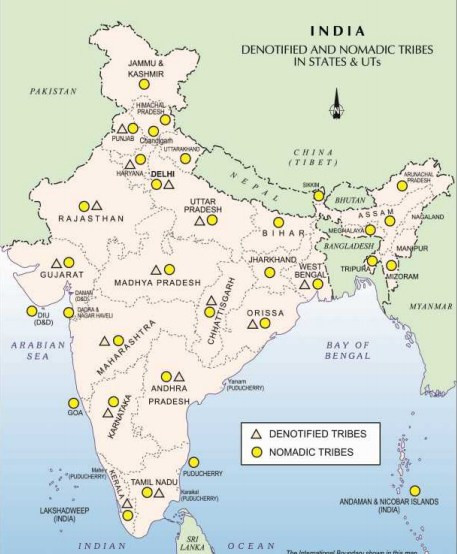 Denotified, nomadic and semi-nomadic tribes in India (Source: Renke Commission report, 2008) According to a survey conducted by UNICEF with the Central Human Rights Commission, 27 thousand families of nomadic tribes like Bedia, Kabutra, Nat, Rajnat, Prerna, Kalbelia, Sarania, who were living on a socially accepted traditional profession twenty-five years ago in Madhya Pradesh alone, are engaged in prostitution as a means of survival. Earlier, these artist tribes were invited with honour and remuneration to dance and sing during yatras, fairs, weddings. But in the age of modern means of entertainment, these people were trapped.
Denotified, nomadic and semi-nomadic tribes in India (Source: Renke Commission report, 2008) According to a survey conducted by UNICEF with the Central Human Rights Commission, 27 thousand families of nomadic tribes like Bedia, Kabutra, Nat, Rajnat, Prerna, Kalbelia, Sarania, who were living on a socially accepted traditional profession twenty-five years ago in Madhya Pradesh alone, are engaged in prostitution as a means of survival. Earlier, these artist tribes were invited with honour and remuneration to dance and sing during yatras, fairs, weddings. But in the age of modern means of entertainment, these people were trapped.
In Gujarat, around 200 families of Sarania, a nomadic tribe, live in huts encroaching on government land in Wadia village of Banaskatha district. The traditional business of this tribe is to go from village to village to sharpen knives, blades, scissors etc. with the help of a grinder mounted on a bicycle. Industrial revolution took place. Automation and the era of 'use and throw' affected items such as knives. So, their traditional business was threatened. Due to lack of alternative occupations and opportunities, this community was also drawn towards prostitution. The women of the entire settlement became prostitutes and the men became pimps who dragged the customer to the village. On behalf of the National Commission, we held a meeting in the presence of local leaders, leaders, government officials, police and media. After listening to everyone in this meeting, a group of eight-ten women came to the stage and said, “Yes, we are involved in prostitution. We have to endure it, not with pleasure, but with compulsion. Give us the necessary opportunities and tools to survive and to support the family. From that day we will close this business.” The meeting became national news and brought the village and the issue into the limelight across the country. Today, the state and central government are faced with the challenge of at least preventing the decline of marginalized communities who have no alternative, who are unemployed, despite having traditional skills.
I would like to give some information here about the condition of some more nomads through study and experience.
In the Himalayan region i.e. from Jammu and Kashmir to Arunachal Pradesh there are pastoral nomadic tribes. According to the seasons of the weather, they travel from base to peak and from peak to base throughout the year with animals. It has tribes like Hindu Gujar, Muslim Gujar, Bakharwal, Changappa, Gaddi, Shipi. After coming in contact with the Ban Gujar tribe of Himachal Pradesh, we asked them the question, "Do you have a ration card?" "What is that?" was the reply! After this experience, we requested the Chief Minister of Himachal Pradesh to conduct a survey of such nomadic tribes roaming in the forest. They did it within a year. Eight hundred and fifty people were surveyed. Out of eight and a half hundred, not one has a ration card, no voter card, not even a single one has been on the threshold of a school. Regarding such tribes, I spoke to the Chief Ministers of the three states of Himachal Pradesh, Haryana and Punjab about the rehabilitation of these citizens. He said that these people stay in our state for maximum three to four months. For the remaining eight to nine months, they go to another state. So, we treat them as guests. The Himachal Chief Minister said that they don't have any land to develop urban settlements. All the forest land is owned by the central government. If the central government grants forest land for their rehabilitation, the state government will definitely plan for their it. We communicated these circumstances and the Chief Minister's words to the Central Government and the Prime Minister of the country. It was obvious that some of the people in the country are natives of India but do not get any rights or benefits of Indian citizenship.
The Kalbia dance art form of Rajasthan is renowned at the state, national and international levels. An uneducated female artist named Gulabo Kalbelia has also been awarded the 'Padma Bhushan' by the Government of India. What is the physical and social condition of this Kalbelia community in Rajasthan, which preserves the art culture of India? It is a subcaste of the Nath Sampradaya. Majority of the people of this tribe live in huts and tents. It is their custom to bury the body after death in a state of samadhi, instead of cremation. This tribe does not have the right to own land for a fixed house; nor after death is there any right to have a cemetery for burial. This nomadic tribe is considered as a Scheduled Caste (formerly untouchable) in Rajasthan. The past ten years have seen many incidents where their corpses, after being buried in forest land or farm land, were exhumed by the established community with JCB machines and returned to their huts. So, such corpses had to be buried in the yard in front of the hut or inside the hut and the floor had to be patched up again and they would continue living there. I also joined social worker Aruna Roy in the satyagraha program organized by 'Lok Sangathan' in front of the Rajasthan Vidhan Bhavan to get them a minimum right of burial. After 70 years of independence, what kind of orphaned condition does the nomadic Kalbelia community have to endure, without the right of citizenship?
We all know about the famous 'Kathuva Rape Case' which took place in the foothills of the Himalayas in Jammu. An eight-year-old girl named Asifa was raped for seven consecutive days in a temple and killed. Asifa belonged to the 'Bakharwal' community, a nomadic tribe. She was not a citizen of this village. As per the traditional occupation, the family comes to the foothills during the winter when it snows. During this time, they do not have the support of the villagers. Some sensitive journalists and social activists exposed and publicized this incident. Such incidents are constantly happening wherein the unorganized minority nomadic tribes is overpowered by the established forces in the village and many such incidents are suppressed due to pressure. This state of the nomadic tribe remains the same from the Himalayas to Kanyakumari.
There is a tribe in Chhattisgarh who make a living by doing acrobatics. It is called the Nat tribe. The tribe travels from Nepal to Kanyakumari doing rope walking and acrobatics and stays in Chhattisgarh for the four months of monsoon. There this tribe is included in Scheduled Castes. Therefore, they are recorded in the census every ten years. Their caste census was conducted. According to 2001 census their population in Chhattisgarh is more than 85 thousand and according to the same census report seven persons out of that 85 thousand are matric pass. This is the educational development of those 85 thousand people in 54 years of independence. From this one can imagine their overall development.
This Nat tribe, doing acrobatics, is considered a Scheduled Caste in Chhattisgarh. Hence the census gives their caste-wise information. The nomadic tribes like Dombari, Khelkari, Masanjogi, Kadakalakshmi, etc., who do similar business, are OBCs in other states like Maharashtra, so they are not counted by caste. How do we know what their human development index is? How does one plan their development without knowing where they are and how much it is? These questions are not answered during the prevailing decision-making process.
At Gaon Chauthia, Taluka Multai, District Betul Madhya Pradesh, the state government had given the government land to 60 families of Pardhi community and constructed concrete houses for them at the expense of the government. The population of this Pardhi settlement was around 300. Among them, two drunk youths got into a fight with the people of the neighbouring village. A woman of the Kunbi tribe was killed in it. The police took appropriate action against those two youths; but after two days, the people of the village brought JCB and tractors and razed the entire settlement of their fixed, concrete houses. People of the village raped ten or twelve young women. Three or four people were killed. The entire Pardhi community, in collaboration with many other social service organizations, issued a statement that the criminals should be punished. Why are the people in the settlement being punished? They need to be rehabilitated. This incident happened in September 2007. Till date this Pardhi settlement has not been rehabilitated. The then Revenue Minister of Madhya Pradesh Shri. Patel had stated in a public speech that, “I will see to it that the entire Pardhi community of Madhya Pradesh will move out of the state.” From this incident and from the statements of the Chief Ministers, it is clear how deeply prejudiced sentiments have permeated the minds of the rulers as well as the common people at the village level.
The people of the Bhatkya Thelari tribe demanded the District Collector to get government land to build houses in the village Chinchwar, District Dhule, Maharashtra. At that time, the collector was Shri. Daithankar. The ones making this demand from the Thelari tribe had no rightful land in any village. They were completely landless and homeless. Keeping in view the situation and need, the District Collector sanctioned government land for them within the limits of Chinchwar village and after allocating that land also gave possession to the concerned. But the people of the village and the Gram Panchayat opposed this land-sanction. The District Collector maintained his decision. The concerned Thelari people took possession of the place and went to live there. On the very next day, a group of one hundred to one hundred and fifty people from the village came with sticks and beat up the men and women of the Thelari tribe. Their leader, 32-year-old Kalu Thelari, was killed on the spot. Now the Telari people who have fled are afraid to ask for any land to build a house. They feel that it is better to live a nomadic life rather than a homeless state.
This is an incident in 2005 in the Village Narlad, Taluka Gangakhed, District Parbhani, Maharashtra. Suman Bhairoba Pawar, a girl from the Pardhi tribe, took admission in the fifth standard in the Zilla Parishad school in the village. She was a bright and sharp student. But because she belonged to the Pardhi tribe, the people of the village did not like her. They could not bear the idea of their children studying in the same class with this girl. The powerful people of the village as well as members of the Gram Panchayat put pressure on the school headmaster and forced the girl to leave the school. The girl's education came to a halt. Later the matter was taken up by the social organizations and social workers who took it to the seniors. Finally, the matter was discussed in the state assembly. After the National Commission took cognizance of the matter in 2006, the village police Patil and the headmaster were suspended, and the girl was admitted to Sharda Vidyamandir in the neighbouring village of Godri.
These are some of the salient examples, but in every state, there are many instances of injustice and cruelty which show the sad and the heart-stirring condition of many nomadic tribes. They are eligible to benefit from government facilities and concessions. Certain government welfare schemes have certainly benefited the people of such nomadic tribes.
In states like Maharashtra, there are more than five hundred Ashram-Shalas specially for nomadic students. Thousands of students are studying in these schools. Certainly there are complaints regarding the quality of education, the quality of their health, their employment after completion of education or employment through the industry, but from the point of view of improvement, it should be said that the condition of the educated unemployed is better in terms within the democracy than that of the uneducated unemployed. Most of the nomadic tribes are beggars. Living on alms is wrong. Therefore, the government enacted the 'Prevention of Begging Act' with the purpose of making the people who eat by begging realise the value of hard work and provided them with opportunities and means to lead a dignified life based on their own work. They also established alms-houses everywhere. This beggar house is like a temporary prison, but it has a system of teaching various skills to those who engaged in begging formerly and also educating young children. The government's hope behind this initiative is that after three years of jail training, they should stand on their own feet in the society and lead a dignified life like the general public. But who will provide tools to the penniless beggar who has been trained for these three years? Who will give them a chance? The government has not made a definite provision about who will pay them. The bank does not even allow such people to stand at the door. Therefore, although the thoughts, expectations and activities of the government are good, this law and the plan of the alms-houses are mostly beneficial only to a few.
In the last 75 years of independence, billions of rupees have been spent on the implementation of this law and scheme. But the government cannot show that at least 100 beggars are living with self-respect as a result of such huge expenses. There is a need for a 'social audit' of these government schemes.
Question - A commission was appointed under your chairmanship to improve the condition of nomadic society. What happened to the study and recommendations made by the commission??
Answer - The commission had a department of expert and experienced anthropologists and sociologists. Along with the individual demands of the people, multiple other factors were considered. Information and counsel were sought from -
- the statements of people's organizations
- research papers of researchers in different universities,
- views of those in power in the state government,
- opinions of the bureaucrats implementing schemes,
Also, by visiting the nomadic settlements scattered all over the country, observing the people's life there, keeping their preferences and demands in mind, we have prepared a conscientious report. The information I have narrated so far, has been recorded with evidence in this report. Apart from this, despite lack of time and resources, the Commission has conducted a 'rapid survey' of nomads in urban and rural areas in 18 important states with the cooperation of recognized research institutes and universities of different states. The statistics available from that rapid survey are as follows.
Destitute and abandoned but not recorded below poverty line - 94 percent, 98 percent landless, 69 percent living in temporary tents and huts, 28 percent without access to crematorium, 72 percent without ration card, 50 percent born in slums or at home, 58 percent without birth certificate, 82 percent without death certificate, 80 percent using unsafe water, 61 percent not availing health services, 94 percent who do not get the benefit of banks and credit funds, 60 percent who take private loans at 5 to 30 percent interest per month, 21 percent who do not get two meals a day, 88 percent of women who are victims of police harassment, 25 percent of women who admit to sexual harassment. These figures are from a rapid survey.
If the entire survey is done with conscious sensitivity, this figure can vary about 5 to 10 percent. However, the statistics are worrisome. This percentage of nomads in the total population of 15 crores is a cause for concern in the 75th anniversary year of independence.
After submitting the report of the commission, a study group comprising of the Planning Commission, Department of Social Justice, Central Government, Educationists, National Advisory Committee, Anthropologists, Sociologists and some other experienced administrators was appointed to examine and formulate the report of the Commission. The coordinator of which was Narendra Jadhav, a member of the then Planning Commission. Before studying and making recommendations regarding nomadism, this committee studied all the relevant commissions, discussed and consulted with the administrators implementing the social welfare schemes of all the states, discussed with the representatives of voluntary organizations working in this field in the states, all of them in the community. They organized seminars at the central level to generate discussion, prepared a report and submitted it to the central government. It states that nomadic tribes are scattered in most of the states of the country. Moreover, they are included in all the four categories of Scheduled Castes, Scheduled Tribes, Other Backward Classes and Non-Backward Classes. The nomadic tribes belonging to different backward classes, though they are entitled to the facilities and concessions reserved for that class, in reality it appears that they cannot avail of the facilities and concessions available to them. The reasons are as follows.
- Since these tribes are unstable and nomadic, they do not get necessary identity cards. Those who have received identity documents like Aadhaar card, voter card, do not get documents like birth certificate, death certificate, ration card, caste certificate. So, they cannot avail the scheme.
- Those who have the requisite credentials are ignorant, disordered, unorganized, dormant, and before they have access to the schemes, the aware and organized people of that class have already taken advantage of the available facilities and budget.
This fact is accepted by the study group as well as by the central level rulers. However, the necessary action to change this fact and reach the bottom for the needy is not yet seen at the government level. A report presented by the National Commission in 2008 elaborated on the issue of 'identity crisis' and recommended that a speedy drive should be undertaken to issue identity cards to the nomadic tribes first, based on a people-oriented approach. Government representatives, representatives of local self-government bodies, representatives of local people, and direct beneficiaries will participate in it.
On the whole, it is clear from all the reports that in each backward class there is a group of organized and aware tribes and another group of unorganized-dormant tribes. The National Commission has recommended that dormant and unorganized nomads should be designated as a separate category. They should be 'considered a target group' for the purpose of development, keeping in mind their hitherto disadvantaged status. Special plans, special budgets and special systems should be implemented for them. A separate law should be made to protect them from discrimination, indifference, injustice, oppressive treatment. Effective implementation of welfare schemes for them should be done. They should be given constitutional protection. Also, a 'Task Force' should be set up to see whether strict implementation takes place.
What is important is that plans should be made so that they can get shelter, education, means of income, healthcare at the same time, in one place, and have the right to live with dignity as envisaged in the constitution. It is as clear as sunshine that nomads have not benefited from the intentionally planned development process. If planning is to benefit them, considering their backwardness and considering special opportunities for them, those who plan must know who, where, how and to what extent they are. For that, the commissions recommended that their caste wise census and socio-economic and political survey should be conducted. Had this demand been approved, the confusion caused by the lack of 'empirical data' would not have happened in the present time.
Different nomadic tribes belong to different backward groups. Not only this, tribes with similar backwardness are included in different backward classes. In some states, even a single tribe is included in different backward classes, taluka-wise and district-wise. This is a classification error. Further recommendations may be given in greater detail. But first of all, there is a need to prioritize their eligibility to take advantage of reservation and development opportunities by giving them the right to live with dignity. Only then will the real development process begin. Otherwise, the words Constitution, Citizenship, Freedom, Fraternity, Justice will be meaningless for them
- Balkrishna Sidram Renke
Interview and Transcript: Prof. Sunita Chawala
Translation: Rahee Dahake
Tags: independence day anniversary denotified tribes nomadic tribes balkrishna renke Load More Tags


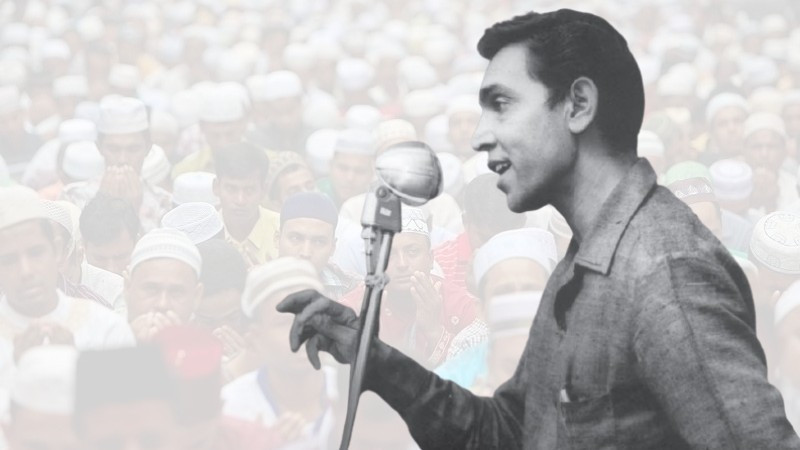
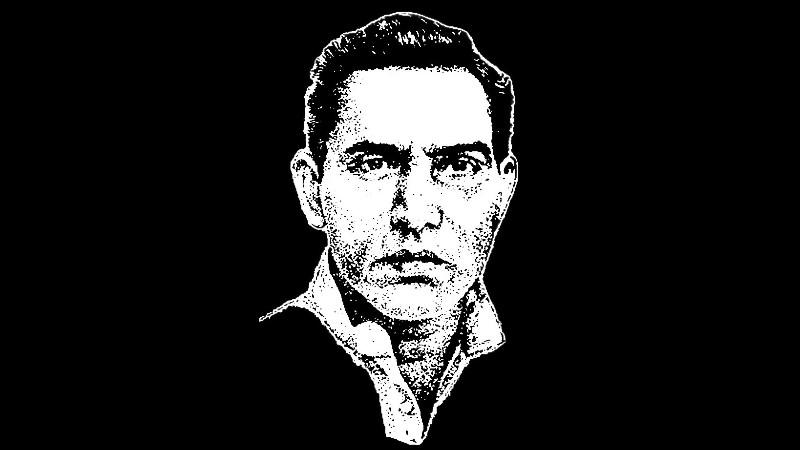
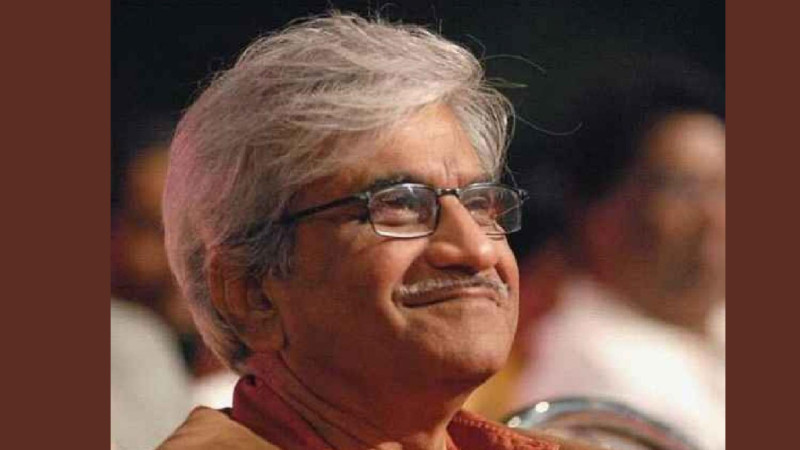
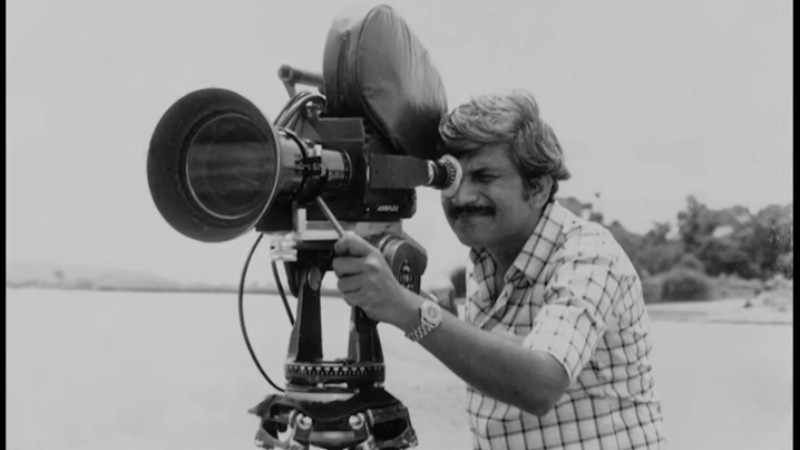


























Add Comment